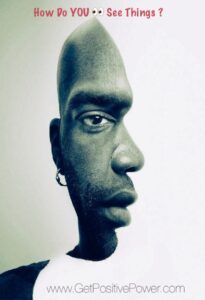 People see things differently because of a combination of life experiences, values, beliefs, emotions, environment, and biology. Here’s a breakdown of the main reasons why perceptions differ:
People see things differently because of a combination of life experiences, values, beliefs, emotions, environment, and biology. Here’s a breakdown of the main reasons why perceptions differ:
⸻
1. Personal Experiences
• Every person’s background—family, culture, trauma, education—shapes how they interpret the world.
• Example: Someone who grew up in poverty might see money as security, while someone born into wealth might see it as freedom.
⸻
2. Beliefs and Values
• Core values (like honesty, loyalty, success) influence how we judge right from wrong, important from unimportant.
• Religious, spiritual, or philosophical beliefs can deeply color how one views events or other people.
⸻
3. Emotions and Mental State
• A happy person may see opportunity; a depressed person may see only obstacles—even in the same situation.
• Our moods act like filters for how we interpret what’s around us.
⸻
4. Cultural Differences
• Culture shapes everything from language and humor to how we handle conflict or express love.
• What’s respectful in one culture may be rude in another.
⸻
5. Cognitive Biases
• Humans aren’t perfectly rational—we tend to favor information that confirms what we already believe (confirmation bias).
• We also judge situations differently depending on how they’re framed or how they make us feel.
⸻
6. Perspective and Role
• A boss, employee, customer, or outsider will all see a business decision differently based on how it affects them.
• “Where you sit determines what you see.”
⸻
7. Neurodiversity
• People with ADHD, autism, anxiety, etc., often literally process the world differently, seeing patterns, risks, or details others don’t.
~ Joe Gradia